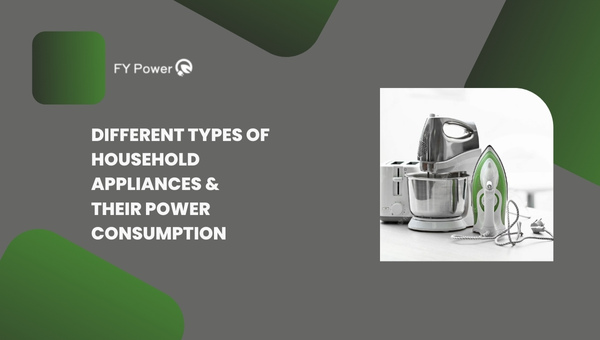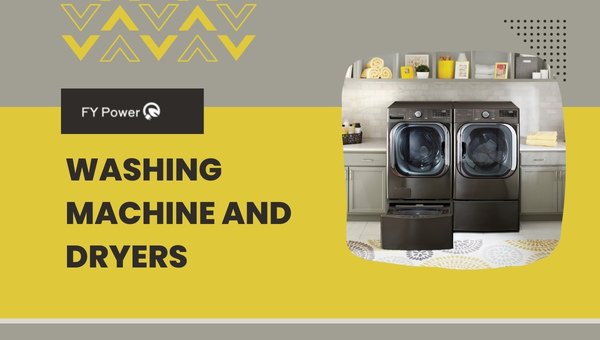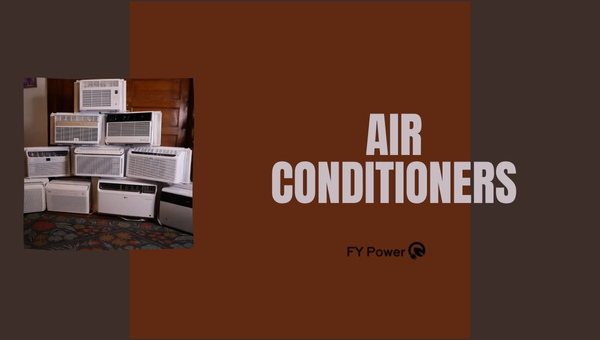Appliances are essential for modern life, but they can also be a major contributor to energy consumption and costly electricity bills. Knowing how much power each of your household appliances consumes can help you identify the biggest offenders and make adjustments to reduce your energy costs.
In this article, we’ll provide an overview of the power consumption of household appliances so that you can better understand their impact on your electricity bill.
We’ll cover topics such as which types of appliances use the most energy, what factors affect appliance power usage, and tips for reducing appliance power consumption to save money and be more environmentally friendly.
Different Types of Household Appliances & Their Power Consumption
Following are the estimated power consumption of some common household appliances.

Refrigerators
Refrigerators are energy-intensive, consuming up to 7% of a home’s total electricity usage. Refrigerators come in various sizes and have different power ratings, depending on the make and model. Depending on your needs, you can find a refrigerator that consumes anywhere from 350 watts/hour to 780 watts/hour.
Washing Machine And Dryers

Washing Machines and dryers consume around of the total energy used in the average home, depending on the model. Washing machines use between 400 to 1500 watts per hour. Similarly, clothes dryers range from about 1500 and above watts per hour, with most falling somewhere over 1800 watts per hour.
Dishwashers
Dishwashers also require a considerable amount of energy to run efficiently. Standard dishwashers consume 1300 to 1500 watts; newer high-efficiency models range from 700 to 1,100 watts per cycle.
Televisions
Televisions use an average of 180 watts per hour depending on size and type, a relatively low amount compared to other appliances but still worth considering when factoring energy consumption into your daily routine.
LCD or LED televisions tend to be more efficient than their older CRT counterparts, as well as plasma TVs, which generally require higher amounts of energy depending on the type of model.
Also Read: List Of All Electric Appliances And Their Wattage Usage
Air conditioners

Air conditioners are one of the most power-hungry appliances in the home due to their cooling capabilities requiring higher energy consumption levels.
The wattage needed for air conditioning units varies greatly depending on size and efficiency rating but can range anywhere from 800 to 3,500+ watts/hour, depending on the type of unit you have.
Central Air Conditioners use between 15 and 60 amps & 240 volts, while a Window AC unit commonly uses anywhere from 3 to 20 amps and 120 volts.
Water Heaters
Water heaters are another common appliance in our homes that require large amounts of power to function properly—anywhere from 500 to 4,500+ watts/hour depending on tank size and insulation levels, amongst other factors like water temperature setting and recovery rate.
Ceiling Fans
Ceiling fans are the most efficient appliances in the home regarding power consumption, consuming just 25-75 watts/hour.
Computers/Laptops
Computers and laptops are essential technology in the modern household, and their power consumption is a crucial factor to consider. Computers and laptops can range from 40 watt-hours to 200 or more depending on the processor and graphics card installed, size, and other components. On average, most computers or laptops consume around 60-90 watt-hours.
Toasters
Toasters are one of the most common kitchen appliances found in homes today, and they generally consume between 1,000 and 1,500 watts of power per hour. Toaster ovens require slightly more energy due to their size and extra features such as convection cooking or broiling.
Ovens
Ovens are one of the most energy-intensive appliances in the home. Gas ovens typically consume around 300 watts per hour, while electric ovens can use between 1,000 to 3,000 watts per hour. Electric ovens with additional features such as convection cooking or broiling can use even more energy due to their size and power requirements.
Microwaves
Microwaves are one of the most common and convenient kitchen appliances found in most homes today. They provide an easy way to quickly heat up food and drinks with minimal effort and energy. On average, most microwaves consume between 700 and 1,200 watts of power per hour.
Also Read: All RV and Camping Appliances with Their Power Consumption
Vacuums
Vacuum cleaners are also quite common in the average home and consume around 500 to 1,000 watts per hour, depending on the model. Vacuums with additional features such as wet/dry cleaning capabilities or HEPA filtration require more power than traditional vacuums.
Hair dryers
Hair dryers consume a considerable amount of power in order to quickly and efficiently dry hair. Most hair dryers range from 1,200 to 1,250 watts per hour, with professional models utilizing 2,000+ watts/per hour.
Understanding Your Home’s Overall Energy Consumption
It’s essential to understand how your home is using energy so that you can make sure it’s being used efficiently and cost-effectively. Here are some tips for understanding your home’s overall energy consumption.
Know Your Appliances
Keep track of the appliances in your home and how much power they use. Knowing this information can help you to identify which ones are using more energy than necessary and replace them with more efficient models.
Monitor Your Utility Usage
Monitoring your electricity usage over time can help you see where to make changes to lower costs or increase efficiency. Look for any sudden increases in use so you can take action quickly.
Invest In Energy-Efficient Features
Investing in energy-efficient features like double-paned windows, insulation, or smart thermostats can help reduce overall energy consumption and save time.
Change Your Habits
Small changes, such as turning off lights when leaving a room or unplugging electronics when not in use, can significantly reduce energy usage and save money.
Also Read: Exploring What Appliances Can A 6000-Watt Generator Run?
Some Facts About The Power Consumption of Household Appliances
- The average power consumption of household appliances can range from a few hundred watts to 5,000 or more watts per hour.
- Over 20% of the electricity used by residential homes is for lighting, while major appliances such as refrigerators and clothes washers use up to 35%.
- Standby mode on electronics can account for 10-20% of the total energy consumed in the home.
- Dishwashers typically use 900-2,700 watts of electricity, depending on the size and cycle settings selected.
- Heating and cooling account for about 48% of home energy consumption in most climates.
- Clothes dryers typically consume 1,200 to 1,250 watts per hour, with professional models utilizing 2,000+ watts/per hour.
By being aware of the power consumption of your household appliances, you can make informed decisions on how to reduce your energy usage and save money.
Being mindful of your energy use is essential to living sustainably and responsibly. With a few changes in behavior, you can quickly begin reducing your home’s power consumption and saving money today.
Conclusion
Understanding your home’s energy consumption is key to living sustainably and responsibly. Knowing how much power each appliance in the home uses can help you identify areas where energy efficiency can be improved.
Additionally, investing in energy-efficient features for the home or changing certain habits can significantly reduce overall energy use and save money. With these tips, shown in this guide in the above content, you can quickly understand how much electricity each appliance uses and how to reduce your home’s energy consumption.

